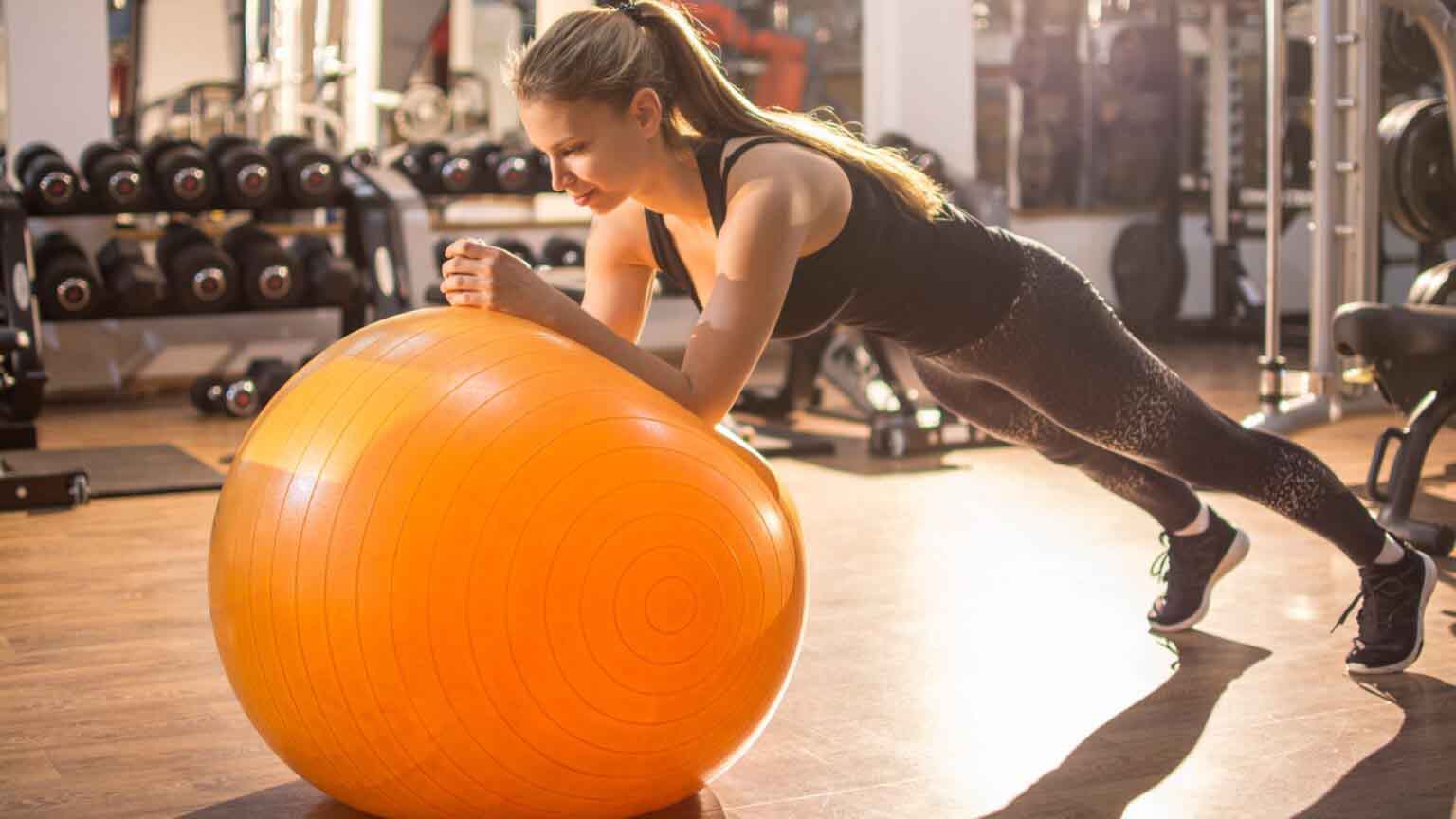Table of Contents
Yoga ball, also called stability ball, balance ball, or exercise ball, is an awesome tool to achieve fitness goals for those sportsmen. It helps you remain balance, keep flexibility, exercise core muscles, abdominal muscles and back muscles, stimulate blood circulations and so on. Using it correctly, you’ll yield twice the result with half the effort while training.
Nowadays people have become increasingly health-conscious and they usually choose to exercise in the gym with professional fitness equipment and instructors. As a gym owner, selecting appropriate fitness equipment is inevitable.
However, it’s never an easy task with stunning choices of exercise balls in the market. As a leading custom yoga fitness ball manufacturer, Speck writes this guide to help you out of these questions. Now, follow this guide and learn about main characteristics of fitness balls and buying tips as well as traps which need avoiding while buying fittest yoga balls.
Types of Yoga Exercise Balls
Exercise ball is a ball made of soft elastic and filled with air. The diameter of the ball usually ranges from 35 cm (14 inches) to 85 cm (34 inches). By either filling the ball with air or letting it deflate, a valve stem can be removed to change the air pressure in the ball. It is used in multiple scenarios like physical therapy, athletic training, or even weight training.Then let’s take a look at the different types of yoga exercise balls.
The Swiss Ball
Swiss ball is a large inflated rubber ball developed by Aquilino Cosani, which first appeared in 1963. At first, these balls are used on the treatment of newborn infants but soon widely seen in gyms, offices and home for exercising due to numerous benefits.No matter who you are (a professional athlete or a beginner), Swiss ball can be a good helper for you.

Functions
- Make it simple to increase the difficulty of a basic exercise, which is regarded asan ideal tool for a “Total Body” workout.
- A good warm-up (post-workout stretch) of improving your flexibility, preventing injury and keeping joints smooth and functional before you start different exercises.
- Activate core muscles and give you the best results in aerobics.
- Work on your balance, stability and coordination.
- A cost-effective and helpful tool for neurologicalrehabilitation.

The Pilates ball
Pilates ball, also known as small exercise ball, is the smaller version of Swiss ball. These small exercise balls fold up small enough to fit in a gym bag or pocket. You can easily inflate and deflate these small balls based on your actual needs. With an unstable surface working on core stabilization, Pilates ball’s functions are quite comparable to those of the Swiss ball. But due to its small size, most people use it to exercise the lower part of body or reduce the pain of back.
Functions
- Different Asanasincluding high bridge, roll up, crescent moon, leg circle, helicopter and others.
- Strengthen the pelvic floor.
- Build up the strength of abdomen muscle groups and improves the flexibility of waist.
- Improve your control and stability of core muscles.
- Make you healthier by adjustingyour body posture in a right way and maintaining a slight curve in your spine.
The Therapy Ball
Therapy ball, a kind of yoga ball, is made of high grip rubber, specifically for this purpose of massage. It helps with pain relief and balance improvement and aids in the control of various movements, including jumping, rolling, standing, and sitting. This ball has different sizes to accommodate diverse exercises. On the other hand, it’s an important part of yoga. The best results can be achieved while practicing yoga with a therapy ball.

Functions
- An idealequipment for physical therapy, relieving pains on any body parts while using correctly.
- Strengthen your core muscles and improve your control and stability of body while sitting on it.
Manufacturing Process of Yoga Exercise Ball
Speck has rich experience in custom yoga balls / wholesale exercise balls manufacturing. Here comes the brief manufacturing process for your information. Do not hesitate to contact us (sales@yogafitnss.group) if you have any questions or want to get a quick quote.
Step 1: PVC Production
Polyvinyl chloride(PVC) is the most common material used to make yoga exercise balls.PVC, also known as soft plastic vinyl, is produced when vinyl chloride is polymerized. For those who may not be as interested in science, this process basically means that a compound of vinyl chloride is joined together.
Step 2: PVC Additives
Polyvinyl chloride has not been altered as a result of this polymerization process, which isn’t a good material for making yoga balls. So additives are used to change the product. Heat or UV stabilizers, impact modifiers, flame retardants, and many other additives are used to make modified PVC.
Step 3: Create the Ball

A yoga ball will be almost ready to use as soon as the modified PVC is produced. At this time, the ball itself is nothing more than a substantial chunk of modified PVC that can be inflated with air. Pumping air into the appropriate-sized ball and this yoga ball can be ready for market. The usual range for this size is between 55 and 85 centimeters.
Material
Besides PVC, rubber, TPE, NBR, and ABS have also been widely adopted For yoga exercise balls The following form will show you pros and cons of these materials in a clear way.
| Materials | Pros | Cons |
|---|---|---|
| PVC | Soft texture and high hardness; Good resistance for oxidation, flexibility, heat and chemicals; Low cost; Excellent shock absorbing properties; |
Good slip resistance in dry conditions, but poor slip resistance in wet conditions; Low tear resistance; |
| Rubber | Good abrasion resistance and anti slip; Good elasticity; Excellent shock absorbing properties; |
High cost; Smell (no-toxic); |
| TPE | Good anti-slip; Durable; Good elasticity; Moderate price; |
Poor slip resistance in wet conditions; Frequent maintenance; |
| NBR | Light weight and low cost; Excellent resistance for oxidation, heat, abrasion, oil and chemicals; |
Poor anti-slip; Easily affected by the “foaming” and “filling” processes; Uneven quality control of resilience, texture and odor; |
Yoga Exercise Ball Size Choice
While choosing yoga exercise balls, there is no one-size-fits-all solution. There are numerous sizes available for yoga balls. Besides functions, there are a few things to consider before deciding which ball is best for you. One rule is that the smaller the ball, the challenge you face gets bigger. Therefore, large size or smaller size depends on how you intend to use the ball and your exercise plan. For instance, if you want to use a stability ball instead of a bench for your workout, a bigger one is better for intense abs. Then you can choose its size according to your height. Speck hopes that this chart below can serve as a general guide for you.

Tips and Traps Need Avoiding While Buying Yoga Exercise Ball
- Choose an heavierand thicker PVC ball which is neither slick nor sticky. The best material is always professional-standard, non-toxic and latex-free PVC.
- Choose an ball according to one’s height. While sitting on the ball, one’s thighs should remain parallel to the ground and feet should be touching the floor.
- Make sure that the ball will not burstby request a video of anti-burst test from its On a yoga exercise ball, small bubbles indicate anti-burst features and may appear as tiny particles on its surface when examined closely.
- Check out if you have trouble removing the fitness ball’s stopper. The more difficult it is to remove, the better its seal is and the more air it can hold without leaking over time.
- Choose an electric pumpif possible. Because manual hand and foot pumps can be hard to use.
- Don’t completely inflate a ball at once. Before fully blowing up aPVC ball, allow it to rest and stretch overnight.
Conclusion
With so many different yoga exercise balls on the market, it is not easy to choose a proper ball. So knowing more details of the ball will make your sourcing easier. Speck hopes that this article can provide useful information for your sourcing exercise balls. If you have questions, leave a message to us and we’ll get you back soon!





